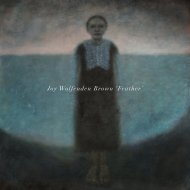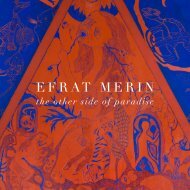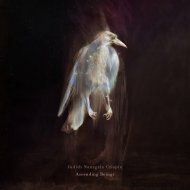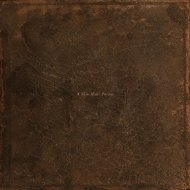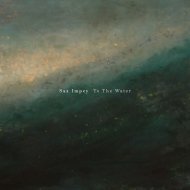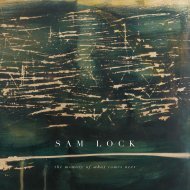Sarah Ball 'Accused Part 2'
Publication for 'Accused Part 2' by Sarah Ball at Anima Mundi
Publication for 'Accused Part 2' by Sarah Ball at Anima Mundi
You also want an ePaper? Increase the reach of your titles
YUMPU automatically turns print PDFs into web optimized ePapers that Google loves.
S a r a h B a l l | A c c u s e d Pa rt 2
Introduction<br />
What does a portrait represent? Can a portrait ever claim to capture the identity<br />
of the sitter beyond the superfiscial? Albert Einstein once stated; “A human<br />
being is a part of the whole, called by us Universe... We experience ourselves,<br />
our thoughts and feelings as something separate from the rest. A kind of<br />
optical delusion of consciousness. This delusion is a kind of prison for us...”<br />
So how can the artist hope to represent that which remains out of reach? A<br />
portrait therefore can only represent an attempt to breach ones own prison. It<br />
can inspire a glimpse out (of ourselves) and propel us towards a glimpse in (to<br />
another). This attempt to connect paints a picture in part of disconnection; the<br />
bridge to cross is one of empathy. <strong>Sarah</strong> <strong>Ball</strong>’s paintings taken from mug shot<br />
photographs enforce this notion in an intriguing way.<br />
Photography creates an immediate perception of character and so the identity<br />
of the object is a product of that instant perception. With mug shot’s there<br />
are relatively few ‘tells’ due to an insisted inherent expressive blankness on the<br />
face of the accused. They are not memorabilia, not sentimental, not imbued<br />
or weighted by emotion, they are the opposite of what photographs often<br />
represent – What do we notice in the absence of such freighted theatricality<br />
– isolation, defiance, vulnerability, truth? The only clue, the only other thing<br />
that we have to make our judgment on this person is that they are perhaps a<br />
criminal – in the absence of all else it is the sum of who they are – is this<br />
enough to complete our picture? This is frequently the case for <strong>Ball</strong> also,<br />
who often knows little else of the subject or their fate, so unlike the painter<br />
who can sit with the subject and attempt through discourse or familiarity to<br />
reveal a truth, all <strong>Ball</strong> has is the silent engagement with her own processes of<br />
1
sympathetic identification. She claims that the objective is not simply in<br />
searching for a figurative likeness, but the essence to make the painting right.<br />
This exhibition is a continuation of a body of work, the first part of which<br />
was exhibited at Millennium last year. It focuses more specifically on groups<br />
of people; from civil rights movement activists, fire raisers (members of the<br />
KKK) and poisoners alongside people whose crimes were suspicious, dangerous<br />
or simply unknown. Some of the crimes are despicable whilst others may have<br />
been heroic. The collective creates a very human portrait, of the shifting nature<br />
of right and wrong. Enforcing the changing subjectivity of judgment - these<br />
portraits challenge us to move beyond our own positive or negative judgments,<br />
if that is possible?<br />
Controversial film maker David Cronenberg stated; “As an artist you look into<br />
yourself to understand the human potential to be all kinds of things that are<br />
not necessarily pleasant but are real - a criminal, a murderer, a sadist, a rapist;<br />
to be all of these things that many people are. You can’t allow yourself to say,<br />
‘I’m a different species from those people.’ Because you aren’t. The criminal as<br />
monster is kind of common. That’s very convenient because you can then say,<br />
‘Of course I’m not a monster, therefore I’m not a criminal therefore I have no<br />
potential in tern of criminality.’ And that lets you off the hook. That gives you<br />
a nice wall between yourself and them.” <strong>Sarah</strong> <strong>Ball</strong>’s greatest achievement with<br />
these intimate works is to effectively break down walls and create bridges – for<br />
me the function of art itself.<br />
Joseph Clarke . 2013<br />
2
Activist<br />
oil on gessoed panel | 18 x 13 cm<br />
3
Activist<br />
oil on gessoed panel | 18 x 13 cm<br />
4
Activist<br />
oil on gessoed panel | 18 x 13 cm<br />
5
Activist<br />
oil on gessoed panel | 18 x 13 cm<br />
6
Activist<br />
oil on gessoed panel | 18 x 13 cm<br />
7
Activist<br />
oil on gessoed panel | 18 x 13 cm<br />
8
Activist<br />
oil on gessoed panel | 18 x 13 cm<br />
9
Activist<br />
oil on gessoed panel | 18 x 13 cm<br />
10
Activist<br />
oil on gessoed panel | 18 x 13 cm<br />
11
Activist<br />
oil on gessoed panel | 18 x 13 cm<br />
12
Activist<br />
oil on gessoed panel | 18 x 13 cm<br />
13
Activist<br />
oil on gessoed panel | 18 x 13 cm<br />
14
Activist<br />
oil on gessoed panel | 18 x 13 cm<br />
15
Activist<br />
oil on gessoed panel | 18 x 13 cm<br />
16
Activist<br />
oil on gessoed panel | 18 x 13 cm<br />
17
Activist<br />
oil on gessoed panel | 18 x 13 cm<br />
18
Activist<br />
oil on gessoed panel | 18 x 13 cm<br />
19
Activist<br />
oil on gessoed panel | 18 x 13 cm<br />
20
Activist<br />
oil on gessoed panel | 18 x 13 cm<br />
21
Fire Raiser<br />
oil on gessoed panel | 18 x 13 cm<br />
22
Fire Raiser<br />
oil on gessoed panel | 18 x 13 cm<br />
23
Fire Raiser<br />
oil on gessoed panel | 18 x 13 cm<br />
24
Fire Raiser<br />
oil on gessoed panel | 18 x 13 cm<br />
25
Poisoner<br />
oil on gessoed panel | 18 x 13 cm<br />
26
Poisoner<br />
oil on gessoed panel | 18 x 13 cm<br />
27
Poisoner<br />
oil on gessoed panel | 18 x 13 cm<br />
28
Poisoner<br />
oil on gessoed panel | 18 x 13 cm<br />
29
Poisoner<br />
oil on gessoed panel | 18 x 13 cm<br />
30
Suspicious and Dangerous Person<br />
oil on gessoed panel | 18 x 13 cm<br />
31
Suspicious and Dangerous Person<br />
oil on gessoed panel | 18 x 13 cm<br />
32
Suspicious and Dangerous Person<br />
oil on gessoed panel | 18 x 13 cm<br />
33
Suspicious and Dangerous Person<br />
oil on gessoed panel | 18 x 13 cm<br />
34
Suspicious and Dangerous Person<br />
oil on gessoed panel | 18 x 13 cm<br />
35
Unknown<br />
oil on gessoed panel | 18 x 13 cm<br />
36
Unknown<br />
oil on gessoed panel | 18 x 13 cm<br />
37
Unknown<br />
oil on gessoed panel | 18 x 13 cm<br />
38
Unknown<br />
oil on gessoed panel | 18 x 13 cm<br />
39
Unknown<br />
oil on gessoed panel | 18 x 13 cm<br />
40
Unknown<br />
oil on gessoed panel | 18 x 13 cm<br />
41
Unknown<br />
oil on gessoed panel | 18 x 13 cm<br />
42
Unknown<br />
oil on gessoed panel | 18 x 13 cm<br />
43
Biography<br />
<strong>Sarah</strong> <strong>Ball</strong> grew up in South Yorkshire and studied at Newport Art College.<br />
After working in London throughout the late 80s and 90s, she returned to Wales<br />
to concentrate solely on painting and complete an MFA at Bath Spa University<br />
in 2005. She is represented by Millennium.<br />
<strong>Ball</strong>’s most recent works are intricate and diminutive painted portraits taken<br />
from police ‘mugshots’. These delve into ideas surrounding 19th Century<br />
physiognomy - which was a widely explored and believed notion that there<br />
was a connection between an individual’s outward appearance and their inner<br />
character - in essence good people ‘looked good’ and bad people ‘looked bad’.<br />
This research progressed to include Alphone Bertillon’s identification system.<br />
Bertillon was a French police officer and biometrics researcher who applied the<br />
anthropological technique of anthropometry to law enforcement, creating an<br />
identification system based on physical measurements.<br />
Acclaim for <strong>Sarah</strong> <strong>Ball</strong> continues to grow with two recent pieces selected and<br />
curated by Edith Devaney the Curator of Contemporary projects in the new<br />
portraiture room at the RA Summer Show, 2013. The work was shown alongside<br />
artists such as Frank Auerbach, Gavin Turk, Gary Hume, Julian Opie, Elizabeth<br />
Peyton, Alex Katz and Michael Craig Martin.<br />
<strong>Ball</strong> is currently Weslh Artist of the Year, having been shortlisted in 2007 and<br />
2009. She also recently one The Best of Wales prize at The National Open Art<br />
Competition, 2012. <strong>Sarah</strong> was also shortlisted for the Threadneedle Prize in<br />
2009 and has again been shortlisted this year.<br />
44
Published by Millennium to coincide with the exhibition ‘Accused <strong>Part</strong> 2’ by <strong>Sarah</strong> <strong>Ball</strong><br />
All rights reserved. No part of this publication may be reproduced, stored in a retrieval system or transmitted<br />
in any form or by any means electronic, mechanical, photocopying, recording or otherwise without the prior<br />
permission of the publishers<br />
Publication produced by Impact Printing Services (www.impactprintingservices.co.uk)<br />
Interview Film by Alban Roinard and Joseph Clarke<br />
ISBN 978-1-905772-63-7<br />
M I L L E N N I U M<br />
Street-an-Pol<br />
St. Ives<br />
Cornwall<br />
01736 793121<br />
mail@millenniumgallery.co.uk<br />
www.millenniumgallery.co.uk





